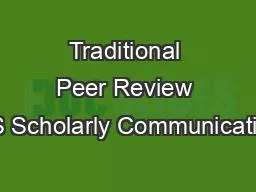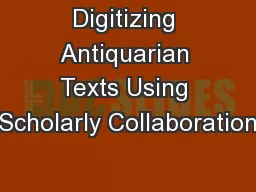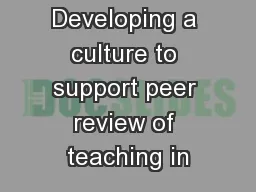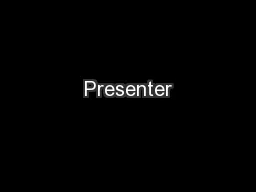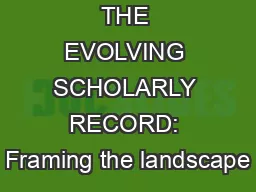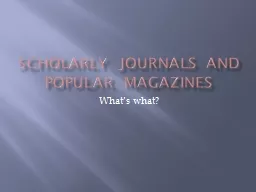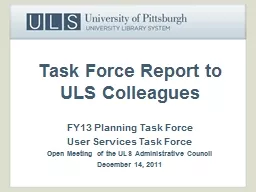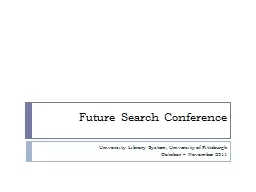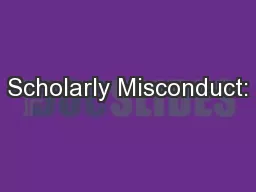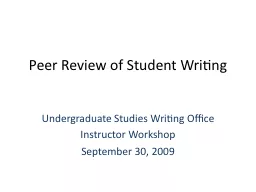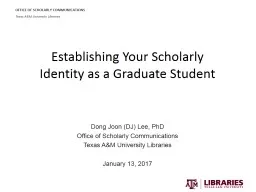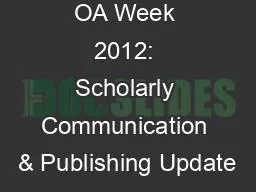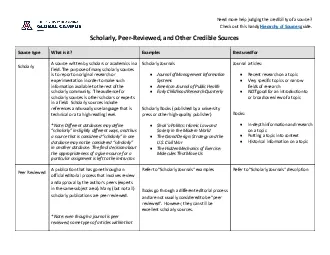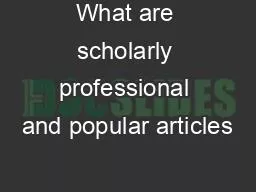PPT-Traditional Peer Review ULS Scholarly Communications
Author : unisoftsm | Published Date : 2020-06-17
Lunch and Learn 14 Office of Scholarly Communication and Publishing University Library System University of Pittsburgh August 21 2014 Traditional Peer Review What
Presentation Embed Code
Download Presentation
Download Presentation The PPT/PDF document "Traditional Peer Review ULS Scholarly Co..." is the property of its rightful owner. Permission is granted to download and print the materials on this website for personal, non-commercial use only, and to display it on your personal computer provided you do not modify the materials and that you retain all copyright notices contained in the materials. By downloading content from our website, you accept the terms of this agreement.
Traditional Peer Review ULS Scholarly Communications: Transcript
Download Rules Of Document
"Traditional Peer Review ULS Scholarly Communications"The content belongs to its owner. You may download and print it for personal use, without modification, and keep all copyright notices. By downloading, you agree to these terms.
Related Documents

